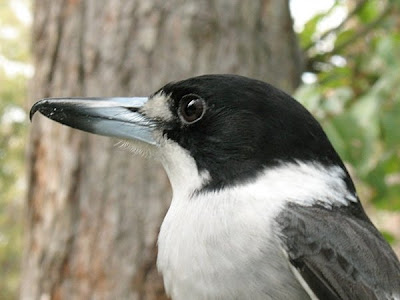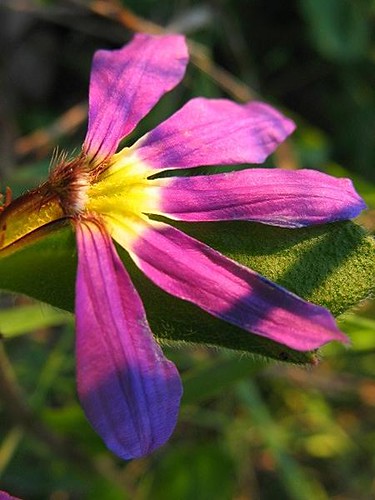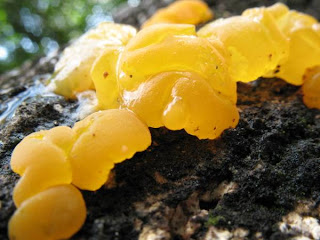Just discovered the magic of sharing images with others on Flickr. I am simply amazed at the quality of many of the images posted there and also quite envious when comparing quality of my images to the work of others. I have posted some links in the sidebar to some outstanding sites that showcase nature, particularly on the NSW Far South Coast but also others that contain exceptional photography.
You can also visit my Flickr page here
http://www.flickr.com/photos/8215416@N06/
Cheers
Pete
Thursday 24 May 2007
Butcherbird Visits Again
My little friend the Grey Butcherbird - Cracticus torquatus paid a visit again. Often aligned with magpies etc, but more likely to be related to the kingfishers, he's a fearless and cheeky character that always puts a smile on my face when I see him. He sometimes sits and quietly sings, a truly marvelous sound which more than matches the Magpie in its beauty.
I catch the occasional mouse in a trap from time to time and he snatches it up and takes it to one of the trees he uses for a larder. Butcherbirds are capable of capturing quite large prey in comparison to themselves and so they use a convenient fork in a branch to lodge their meal and tear it into smaller morsels, at times they even impale their meal on a convenient stick or thorn. This trait is the reason they've been given their very apt common name. Always alert and on the lookout for an errant insect or wayward reptile for a quick snack, the Butcherbird is a swift and agile flier and more than a match for many of the winged creatures on which it dines. Butcherbirds are usually solitary creatures in their feeding habits and I have seen this one fly into a tree and hide food for later, disguising his booty by placing it on the end of a branch and covering it with a dead leaf it plucked from nearby.
The Grey Butcherbird is similar in look to the Pied Butcherbird - Cracticus nigrogularis but the latter tends to have more markedly defined plumage. The two species overlap in much of their range, however they tend to favour differing habitats, so where one species is recorded it is rare to see the other. Grey Butcherbirds can be found over much of southern mainland Australia and also in Tasmania. There is also an isolated population found in the north of Western Australia and the Northern Territory.
Butcherbirds tend to be sedentary in their habits and an established pair may form a permanent territory that the hold for several years. They breed from July through to January depending on location and build a well formed cup shaped nest from fine grasses and other fibres. It is only the female which incubates the 3 to5 eggs for the three and a half weeks it take them to hatch. The ale stands guard at this time to defend the nest, he also brings food to his mate. once the young Butcherbirds have emerged from their eggs, both parents share in the duties of raising, feeding and protecting their offspring. The one in the images is the male and it is not often that I've seen his partner around the place. She tends to be a little more tentative in her reactions to having humans in close proximity and so may prove to be a somewhat more difficult subject to capture.
Well I hope that gives you a small insight into the life of this magic little birds and a real icon of our avian fauna. I trust those unfortunate souls who've not yet managed to see this magnificent bird will one day have the opportunity.
I catch the occasional mouse in a trap from time to time and he snatches it up and takes it to one of the trees he uses for a larder. Butcherbirds are capable of capturing quite large prey in comparison to themselves and so they use a convenient fork in a branch to lodge their meal and tear it into smaller morsels, at times they even impale their meal on a convenient stick or thorn. This trait is the reason they've been given their very apt common name. Always alert and on the lookout for an errant insect or wayward reptile for a quick snack, the Butcherbird is a swift and agile flier and more than a match for many of the winged creatures on which it dines. Butcherbirds are usually solitary creatures in their feeding habits and I have seen this one fly into a tree and hide food for later, disguising his booty by placing it on the end of a branch and covering it with a dead leaf it plucked from nearby.
The Grey Butcherbird is similar in look to the Pied Butcherbird - Cracticus nigrogularis but the latter tends to have more markedly defined plumage. The two species overlap in much of their range, however they tend to favour differing habitats, so where one species is recorded it is rare to see the other. Grey Butcherbirds can be found over much of southern mainland Australia and also in Tasmania. There is also an isolated population found in the north of Western Australia and the Northern Territory.
Butcherbirds tend to be sedentary in their habits and an established pair may form a permanent territory that the hold for several years. They breed from July through to January depending on location and build a well formed cup shaped nest from fine grasses and other fibres. It is only the female which incubates the 3 to5 eggs for the three and a half weeks it take them to hatch. The ale stands guard at this time to defend the nest, he also brings food to his mate. once the young Butcherbirds have emerged from their eggs, both parents share in the duties of raising, feeding and protecting their offspring. The one in the images is the male and it is not often that I've seen his partner around the place. She tends to be a little more tentative in her reactions to having humans in close proximity and so may prove to be a somewhat more difficult subject to capture.
Well I hope that gives you a small insight into the life of this magic little birds and a real icon of our avian fauna. I trust those unfortunate souls who've not yet managed to see this magnificent bird will one day have the opportunity.
Saturday 19 May 2007
Scaevola Aemula
Unknown Coral Fungus
Coral Fungus, originally uploaded by Comfortably Gruntled.
I came across this little species of coral fungus growing in my lawn Narooma NSW.
Coprinus comatus
The Shaggy Inkcap - Coprinus comatus is an edible species and one that is sort after in many regions where people harvest wild mushrooms. This species of fungi is one that self digests an so it needs to be picked young and cooked within a day. I am yet to sample its culinary qualities but I happen to know where there are some growing and with 20mm of rain here yesterday I'm thinking there may well be some nice young ones emerging. I'll keep you informed on how I find them.





The last couple of images show Coprinus as it almost completes digesting itself. This is a very good means of identification.





The last couple of images show Coprinus as it almost completes digesting itself. This is a very good means of identification.
White Moth ID
The white moth that I found earlier now has an identity thanks to one of the regulars on the Scribblygum forum. It is Trichiocercus sparshalli or the Sparshalli Moth.
Labels:
Australia,
Butterflies and Moths,
Insects,
Nature,
Wildlife
Monday 7 May 2007
Gymnopilus Emerging
Found a clump of Gymnopilus junonius just breaking through the soil. In the location they're growing I should have little difficulty in observing their life cycle. They seem to be quite a common species around the area although I've only observed them growing at the base of Spotted Gum~ Eucalyptus maculata.


Butcherbird Visits
The Grey Butcherbird~ Cracticus torquatus is a pretty cool and rather fearless little bird that is prepared to stand its ground and defend its territory against larger birds. Butcherbirds feed mainly on insects, but their diet may also include small mammals, reptiles and even other birds. I once observed a Butcherbird spend ten minutes or longer in an eventually unsuccessful pursuit of a Red-Whiskered Bulbul and I'm sure had it managed its quest, then things would have been grim indeed for the Bulbul (which would be the same size or even slightly larger)


This little lad or ladette hangs around here quite a bit chasing dragonflies and other insects. Took me several days to gain its confidence and get up close.


This little lad or ladette hangs around here quite a bit chasing dragonflies and other insects. Took me several days to gain its confidence and get up close.
Sunday 6 May 2007
Little Jelly Fungus
I have been doing some research into fungi on the Australian National Botanic Gardens' website and others, trying to learn about the various types of fungus and the species I'm likely to come across in my forays around the region. I was delighted the other day to come across this pretty, little example of what I think is Tremella mensenterica (Thanks Elfram for the ID). We had just received 26mm of rain to follow on from 42mm we got the week previous. There were quite a few of these little growths occurring on the trunk of a fallen Banksia serrata and they were nice and plump in the prime of their growth. Don't let the benign appearance of this fungus mislead you, although it is found growing on dead wood, it actually exists by parasitising other fungi species . It appears it is a very delicate fungus, as a couple of examples burst open very easily at my touch and oozed a gooey orange viscous liquid. I went back to the same place a few days later and all that remained were some orange stains on the trunk that gave no indication of their origin.


A Little Brown Spider
Came across a little spider the other day which I'm also yet to find a species. I think it may well be one of the Slender Sac Spiders of the genus Cheiracanthium of which there are about15 Australian species belonging to the Miturgidae family, or long-legged sac spiders. Cheiracanthium was formerly placed in the family Clubionidae.
He was nothing special, just a drab little brown critter sitting on a piece of bark. Not very big, the body would be around 9mm long.



-----------------------------------------------------------------------------------------------
Still had no joy in getting an ID on the little white moth from my last post, I'm going to see if I can find someone that I can email my images to. I really would like to find out what it is.
I have managed to get the names for a few of the fungi which I've come across in recent weeks, so I must thank those members of a particular forum that have helped me make identifications. Now I must get organised and update my files and captions for images.
He was nothing special, just a drab little brown critter sitting on a piece of bark. Not very big, the body would be around 9mm long.



-----------------------------------------------------------------------------------------------
Still had no joy in getting an ID on the little white moth from my last post, I'm going to see if I can find someone that I can email my images to. I really would like to find out what it is.
I have managed to get the names for a few of the fungi which I've come across in recent weeks, so I must thank those members of a particular forum that have helped me make identifications. Now I must get organised and update my files and captions for images.
Friday 27 April 2007
Litttle White (Anzac) Moth
Whilst out on a foray for fungi, I happened across this exquisite white moth, species yet to be determined.










Labels:
Butterflies and Moths,
Fauna,
Insects,
invertebrates,
Photography
Wednesday 25 April 2007
Some Colourful Fungi
Woke early and went for a walk before breakfast on Anzac Day and found a few interesting looking fungi. The first two species were found growing here where I live, which makes about eight or nine that I've seen.
I came across this pink one which I've not seen before. It has one trait which I didn't note until I'd taken the pic, the edge of the gills are the same colour as the top.


Then I found this one which was a bit nondescript above but magic from below


A walk in the afternoon was glorious in the autumn sun and I made a couple of interesting finds.
Not sure what this brown one is, however it is so distinctive in appearance that I think it should be relatively easy to identify. I'll post an ID as soon as I have one



On the way home I came across a small group of fungi that had been overwhelmed by a mould of some description. They smelt even more revolting than they looked.



Well it is now the 27th of April and there is some more rain falling, soft but steady and enough to do some good. Should soon be a lot more fungi popping their heads up so that I can shove a lens at them. I'll keep you posted
I came across this pink one which I've not seen before. It has one trait which I didn't note until I'd taken the pic, the edge of the gills are the same colour as the top.


Then I found this one which was a bit nondescript above but magic from below


A walk in the afternoon was glorious in the autumn sun and I made a couple of interesting finds.
Not sure what this brown one is, however it is so distinctive in appearance that I think it should be relatively easy to identify. I'll post an ID as soon as I have one



On the way home I came across a small group of fungi that had been overwhelmed by a mould of some description. They smelt even more revolting than they looked.



Well it is now the 27th of April and there is some more rain falling, soft but steady and enough to do some good. Should soon be a lot more fungi popping their heads up so that I can shove a lens at them. I'll keep you posted
Tuesday 24 April 2007
Magpies Came Calling
There's a couple of Magpie families that share the space where I live and today one group came searching for worms on my lawn. Both families have young and both are very protective and ever vigilant for a sneak attack from the other group.
Subscribe to:
Posts (Atom)


























